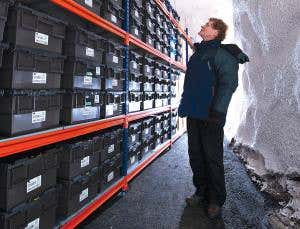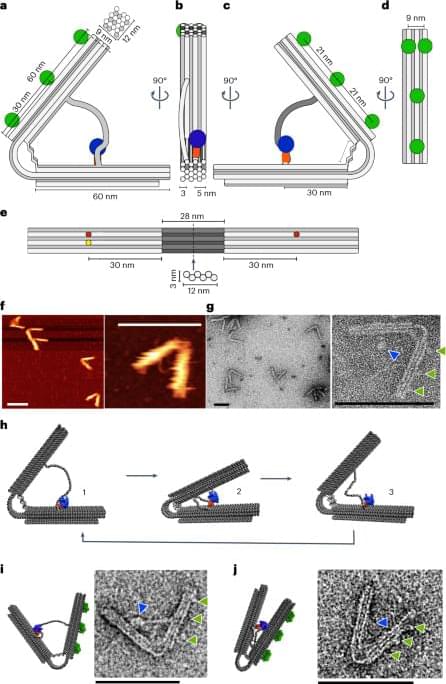Lex Fridman Podcast full episode: https://www.youtube.com/watch?v=Qp0rCU49lMsThank you for listening ❤ Check out our sponsors: https://lexfridman.com/sponsor…
Get the latest international news and world events from around the world.
Why Doesn’t Anyone Monitor AI Consciousness?
Go to https://ground.news/sabine to get 40% off the Vantage plan and see through sensationalized reporting. Stay fully informed on events around the world with Ground News.
AI is changing the world – how we work, how we write, and how we consume media. But it doesn’t seem like many people are interested in how AI is learning to think about itself. I am convinced that eventually AI will become conscious and I am beginning to worry that we simply wouldn’t notice because no one is watching out for it.
👕T-shirts, mugs, posters and more: ➜ https://sabines-store.dashery.com/
💌 Support me on Donorbox ➜ https://donorbox.org/swtg.
👉 Transcript with links to references on Patreon ➜ / sabine.
📝 Transcripts and written news on Substack ➜ https://sciencewtg.substack.com/
📩 Free weekly science newsletter ➜ https://sabinehossenfelder.com/newsle… Audio only podcast ➜ https://open.spotify.com/show/0MkNfXl… 🔗 Join this channel to get access to perks ➜ / @sabinehossenfelder 📚 Buy my book ➜ https://amzn.to/3HSAWJW #science #sciencenews #ai #consciousness.
👂 Audio only podcast ➜ https://open.spotify.com/show/0MkNfXl…
🔗 Join this channel to get access to perks ➜
/ @sabinehossenfelder.
📚 Buy my book ➜ https://amzn.to/3HSAWJW
#science #sciencenews #ai #consciousness
Surprise! Solar System Moves 3x Faster Than Predicted
🌏 Get NordVPN 2Y plan + 4 months extra here ➼ https://NordVPN.com/sabine It’s risk-free with Nord’s 30-day money-back guarantee! ✌
According to new data analysis, our solar system is traveling through the universe roughly 3 times faster than our current models predict it should be moving. Why is this, and why does it matter? Let’s take a look.
Paper: https://journals.aps.org/prl/abstract… mugs, posters and more: ➜ https://sabines-store.dashery.com/ 💌 Support me on Donorbox ➜ https://donorbox.org/swtg 👉 Transcript with links to references on Patreon ➜ / sabine 📝 Transcripts and written news on Substack ➜ https://sciencewtg.substack.com/ 📩 Free weekly science newsletter ➜ https://sabinehossenfelder.com/newsle… 👂 Audio only podcast ➜ https://open.spotify.com/show/0MkNfXl… 🔗 Join this channel to get access to perks ➜
/ @sabinehossenfelder 📚 Buy my book ➜ https://amzn.to/3HSAWJW #science #sciencenews #physics #cosmology.
👕T-shirts, mugs, posters and more: ➜ https://sabines-store.dashery.com/
💌 Support me on Donorbox ➜ https://donorbox.org/swtg.
👉 Transcript with links to references on Patreon ➜ / sabine.
📝 Transcripts and written news on Substack ➜ https://sciencewtg.substack.com/
📩 Free weekly science newsletter ➜ https://sabinehossenfelder.com/newsle…
👂 Audio only podcast ➜ https://open.spotify.com/show/0MkNfXl…
🔗 Join this channel to get access to perks ➜
/ @sabinehossenfelder.
📚 Buy my book ➜ https://amzn.to/3HSAWJW
#science #sciencenews #physics #cosmology
Does the Brain Become Dull With Age? New Study Shows How the Brain Gradually Changes | GRAVITAS
Discover the four major turning points that reshape your brain. From childhood sharpening to late-life resilience, watch how your brain rewires itself through life. Learn the science behind cognitive peaks, aging, and brain health, and uncover the hidden timeline of your mind’s transformation. Don’t miss this deep dive into how the brain evolves over a lifetime.
#childhood #brain #science #wion.
About Channel:
WION The World is One News examines global issues with in-depth analysis. We provide much more than the news of the day. Our aim is to empower people to explore their world. With our Global headquarters in New Delhi, we bring you news on the hour, by the hour. We deliver information that is not biased. We are journalists who are neutral to the core and non-partisan when it comes to world politics. People are tired of biased reportage and we stand for a globalized united world. So for us, the World is truly One.
Please keep discussions on this channel clean and respectful and refrain from using racist or sexist slurs and personal insults.
Check out our website: http://www.wionews.com.





Glassed-in DNA makes the ultimate time capsule
Year 2015 face_with_colon_three
IF YOU must preserve messages for people in the far future to read, Blu-ray discs and USB sticks are no good. For real long-term storage, you want a DNA time capsule.
Just 1 gram of DNA is theoretically capable of holding 455 exabytes – enough for all the data held by Google, Facebook and every other major tech company, with room to spare. It’s also incredibly durable: DNA has been extracted and sequenced from 700,000-year-old horse bones. But conditions have to be right for it to last.

A rhythmically pulsing leaf-spring DNA-origami nanoengine that drives a passive follower
DNA nano machine year 2023.
An autonomous DNA-origami nanomachine powered by the chemical energy of DNA-templated RNA-transcription-consuming nucleoside triphosphates as fuel performs rhythmic pulsations is demonstrated. In combination with a passive follower, the nanomachine acts as a mechanical driver with molecular precision.